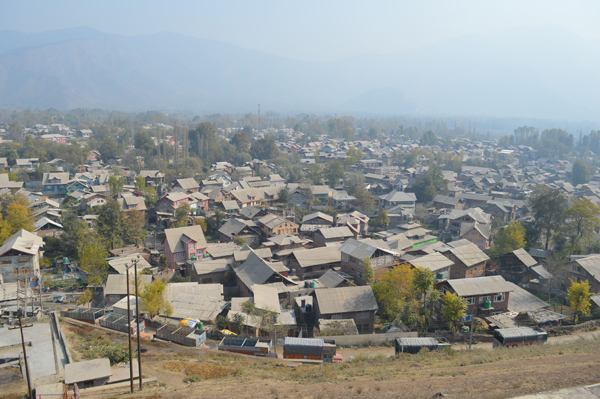Suhail Bhat
SRINAGAR, Nov 6: The unrest in Kashmir, which has put over Rs. 1100 crore cement industry to halt, is turning out to be blessing in disguise for the residents of twin industrial hubs of Kashmir – Khrew and Khonmoh – as there has been 50% decrease in respiratory tract and skin infections.
The residents of both these areas said these days they wake up with crystal blue skies and breathe fresh air which had vanished from this area after locals chose economy over environment by giving consent to setting up of first cement factory way back in mid-eighties.
They said the whole area used to be shrouded by filthy film of grey smog at this time of the year caused by uninterrupted emission of dust and smoke by these cement factories but the unrest is providing a temporary breather to the residents. These factories emit one lakh kilograms of toxic fumes per day thereby wrapping the neighbourhood villages in a toxic grey shroud.
The air pollution is blamed for number of respiratory tract infections. In 2015, nearly, 20,000 people were reportedly diagnosed with several respiratory tract diseases and there are also 10 tuberculosis patients in these twin industrial hubs. These industrial areas have been turned into dust bowl.
At present, approximately spread over on 1000 kanals of land, nine cement factories are operational in Khrew and Khonmoh and they are posing a clear danger to the survival of flora and fauna and human lives. Doctors posted at the health centres in Khrew and Khanmoh said the patient inflow has decreased and skin infections like dermatitis, eczema and rashes which are common here has declined.
“There have not been many cases of Furunculosis and conjunctivitis. The air is a lot cleaner these days”, doctors said. Abdul Majid, a local from Khrew, said at this time of the year the thick choking smog used to envelope their town but this year the mornings are fresh and cleaner.
“The morning would not break easily and visibility was also reduced to a few yards. This time everything is clean and clear. Our roof tops are clear, vegetables are clear and what is more important our air is clear. I remember when I was kid we used to have such pleasant mornings,” he said.
The locals also alleged that chimneys of factories were spewing untreated air relentlessly which was posing grave health threats and every individual would be suffering from life threatening disease.
“The cement factories are violating the Forest Act 1990 by operating under dense forest cover and flaunt the afforestration rules by not planting enough trees. They are shying away from their corporate social responsibility,” the locals lamented.
Environmentalists said one major pollutant contributing to these areas’ bad air is particulate matter, which includes concentrations of fine dust, soot and aerosol particles less than 10 microns in diameter (known as PM 10).
The level of such particulates is measured in micrograms per cubic meter of air. The world environmental experts stipulated that any reading above 40 micrograms is unsafe but Jammu and Kashmir allows 100. In last six months, the average PM 10 level was 80, according to the Pollution Control Board.


